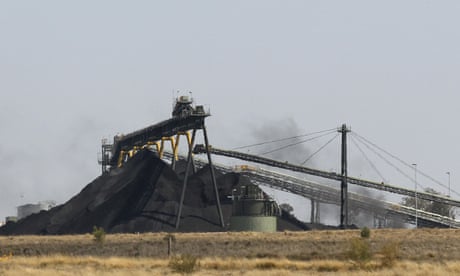Extract from The Guardian
Exclusive: conservationists urge caution as documents show government considering decision-making workaround after bill blocked in Senate.

The move, revealed in documents released to Guardian Australia under freedom of information laws, could allow the commonwealth to reduce its role in environmental decision-making without needing support for a bill to transfer power to the states and territories which has been blocked by the Senate since last year.

A year ago, a review of the Environment Protection and Biodiversity Conservation Act, led by the former competition watchdog head Graeme Samuel, called for an overhaul of Australia’s environmental protections to address the decline of the country’s wildlife.
Since then, legislation that would clear the way for states and territories to take responsibility for environmental decisions under the act has failed to gain enough support in the Senate, in part because the Morrison government has not adopted a set of national environmental standards recommended by Samuel (instead drafting a weaker version of its own).
Legal workaround
Internal documents from the federal environment department show the government could instead rely on another section of the act, which allows for regional planning of conservation, to shrink the commonwealth’s approval role.
Under national laws, the environment minister may create what is known as a regional plan.
These plans are only vaguely described in the act as covering a broad range of biodiversity, social and economic factors and have previously only been used in marine areas to guide conservation and industrial activities.
Another section of the act, known as section 37A, allows the federal environment minister to declare certain development activities are exempt from the requirement to gain federal environmental approval where those projects are covered by a regional plan.

In last year’s budget, the government announced it would spend $2.7m on a pilot regional plan in an area of Australia that is yet to be announced.
An internal departmental briefing document, released under FOI laws, states that two of the pilot’s objectives are to “streamline development decisions by moving away from project-by-project assessments” and “establish that actions taken in accordance with a regional plan declared under s37A of the EPBC Act would not require” a separate federal environmental approval.
It states the other objectives are to allow for planning at different geographic scales and to support “targeted investments in protection, conservation and restoration”.
Habitat protection hopes
The documents have raised concern among environmental groups involved in the consultation, several of whom are supportive of regional approaches to conservation if they are used to improve the environment of a whole area, such as by identifying and protecting critical habitat.
“If it goes ahead, this pilot must be about real action to protect our wildlife and natural heritage, not an effort to lock in wholesale exemptions for destructive industries from community and environmental checks and balances, like we’ve seen with the disastrous Regional Forest Agreements,” Suzanne Milthorpe of the Wilderness Society said.

The government has been urged to protect the habitat of threatened species such as the numbat. Photograph: Frans Lanting/Getty Images/Mint Images RM
A greater role for regional conservation planning – tied to national standards – was a key recommendation of the Samuel review, which suggested the government focus initially on places that were threatened species hotspots. Samuel suggested the government develop regional recovery plans to support this.
“Regional plans hold great promise if done to maximise environmental outcomes,” said Alexia Wellbelove, a campaign manager at Humane Society International.

“But we would be extremely concerned if they are only going to be used as an alternate pathway to exempt destructive developments from environment approvals without any standards, safeguards or investment for conservation.”
The Minerals Council of Australia, which is participating in the consultation, said it was supportive of the government’s regional planning initiative, which, where practical, would “provide a pathway to balance multiple land-use options”.
The council’s chief executive, Tania Constable, said: “This will avoid the need for project-by-project approvals, while supporting long-term management of regional environmental and other values.”
This could include making it simpler for land-use sectors, particularly farmers, to seek advice on and understand their obligations under the law. Landscape-scale planning could include incentives for farmers who manage the environment, Ragg said.
He said the NFF did not support the standards proposed by Samuel.
According to a timeline in the department’s documents, the development of a regional plan in partnership with a willing jurisdiction would take about 18 months.
The location would be selected shortly, potentially in time for a pre-election announcement. However, a Senate estimates hearing heard on Monday that conversations with a state or territory had not yet advanced.
“Extensive consultation continues with stakeholders to finalise the pilot and location,” a spokesperson for the environment minister, Sussan Ley, said.
No comments:
Post a Comment